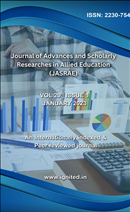A Comparison of Athletes, Healthy Controls, and people with type 1 Diabetes to see how fast they react to sounds and images
Investigating the Impact of Type 2 Diabetes Mellitus on Reaction Time to Auditory and Visual Stimuli
Keywords:
diabetes mellitus, autonomic dysfunction, reaction time, peripheral neurological systems, central neurological systems, diabetic patients, neurological impairment, type 2 diabetes mellitus, response speed, auditory stimuli, visual stimuliAbstract
Autonomic dysfunction develops over time in people with diabetes mellitus. That typicallymeans that the outlook is not good. The test of reaction time is easy and painless, and it may be used toevaluate both the peripheral and central neurological systems. Diabetic patients' response times may bemonitored to detect neurological impairment before it becomes clinically apparent. The impact of type 2diabetes mellitus on response speed is an area that has seen little research. Because of this, researchersset out to see whether T2DM slowed participants' reactions to both auditory and visual stimuli.Downloads
Download data is not yet available.
Published
2023-01-01
Issue
Section
Articles
How to Cite
[1]
“A Comparison of Athletes, Healthy Controls, and people with type 1 Diabetes to see how fast they react to sounds and images: Investigating the Impact of Type 2 Diabetes Mellitus on Reaction Time to Auditory and Visual Stimuli”, JASRAE, vol. 20, no. 1, pp. 121–125, Jan. 2023, Accessed: Jan. 13, 2026. [Online]. Available: https://ignited.in/index.php/jasrae/article/view/14274











